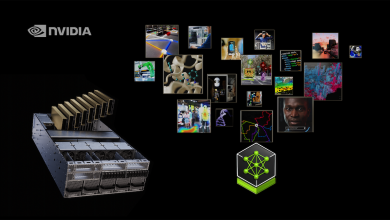Red Hat Unveils Red Hat OpenShift Virtualisation Engine
New virtualisation-centric offering provides a tailored experience for managing virtual machines while providing a path for application modernisation.

Red Hat, Inc., the world’s leading provider of open source solutions, today announced the general availability of Red Hat OpenShift Virtualisation Engine, a new edition of Red Hat OpenShift that provides a dedicated way for organisations to access the proven virtualisation functionality already available within Red Hat OpenShift. Focused exclusively on virtualisation workloads, Red Hat OpenShift Virtualisation Engine provides a tailored option for deploying, managing and scaling virtual machines (VMs), removing features unrelated to VM management. This ensures organisations can maximise the value of OpenShift Virtualisation while aligning with their specific infrastructure needs.
While containerisation may have shifted how virtual machines are used for certain applications, VMs remain a critical tool in IT infrastructure. However, with the virtualisation market experiencing significant changes in recent years, many organisations face uncertainty and rising costs when it comes to managing their virtualisation infrastructure.
Red Hat OpenShift Virtualisation Engine delivers a cost-efficient virtualisation-only solution for deploying, managing and scaling virtual machines.
Redefined virtualisation through a streamlined approach
Red Hat OpenShift Virtualisation Engine helps maximise the value of these investments by entitling only essential OpenShift features and components required for virtualisation, delivering simplified operations and improved efficiency. Powered by Red Hat OpenShift Virtualisation and the KVM hypervisor used across the enterprise data centre and cloud, Red Hat OpenShift Virtualisation Engine is able to run on on-premises hardware that supports Red Hat Enterprise Linux, and on supported bare metal cloud services including AWS bare metal instances. Red Hat OpenShift Virtualisation Engine scales to meet workload demands while providing built-in security capabilities and more consistent performance across the hybrid cloud.
To ease migration efforts, Red Hat OpenShift Virtualisation Engine includes access to Red Hat’s intuitive migration tool – the migration toolkit for virtualisation – that assists organisations in transitioning from other virtualisation platforms, simplifying the migration workflow and helping to reduce downtime while driving greater operational continuity. Red Hat also offers a Virtualisation Migration Assessment, an interactive workshop with Red Hat experts that will assess an organisation’s business drivers, current state and the path to low-risk VM migration. Additionally, Red Hat OpenShift Virtualisation Engine integrates with Red Hat Ansible Automation Platform enabling IT teams to automate VM migrations at scale, along with day-to-day VM management tasks. With Red Hat Ansible Automation Platform, organisations can automate and orchestrate across their virtualised environments and other areas of IT for more efficient, resilient and consistent operations at scale.
Additionally, the Red Hat partner ecosystem is well-positioned to support Red Hat OpenShift Virtualisation Engine with capabilities like storage solutions, extensive backup and disaster recovery options, and networking tools to streamline deployments and scale to modern IT needs.
To unify virtual machine management at scale and limit sprawl, Red Hat is also introducing Red Hat Advanced Cluster Management for Virtualisation. This new edition of Red Hat Advanced Cluster Management for Kubernetes provides focused access to Advanced Cluster Management’s existing features designed to centralise VM lifecycle management and streamline tasks such as VM provisioning, monitoring and day-to-day compliance, while maintaining greater consistency across an organisation’s virtualised estate.
Availability
Red Hat OpenShift Virtualisation Engine and Red Hat Advanced Cluster Management for Virtualisation are now available. More information on how to get started can be found here.




